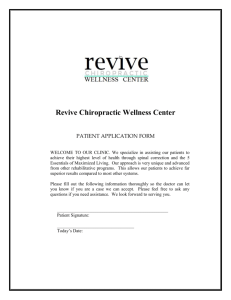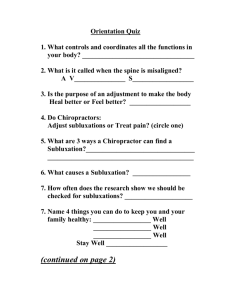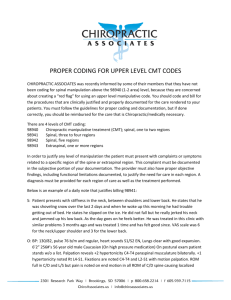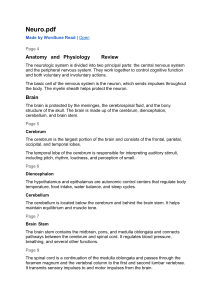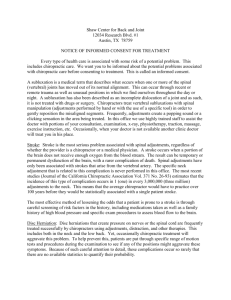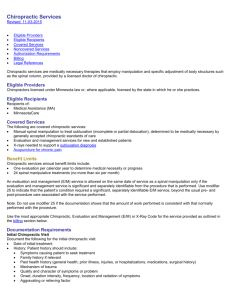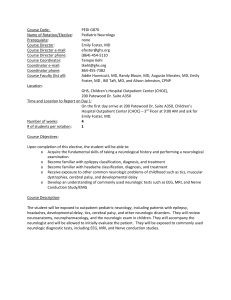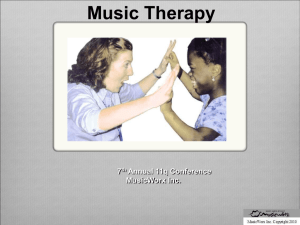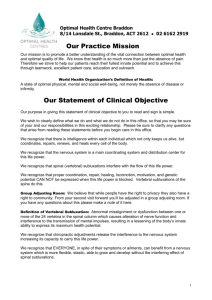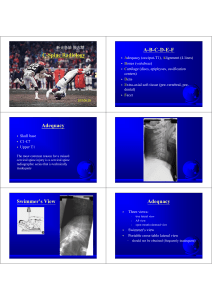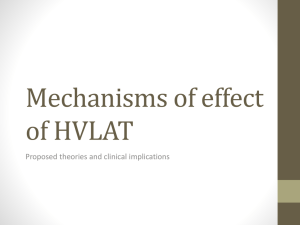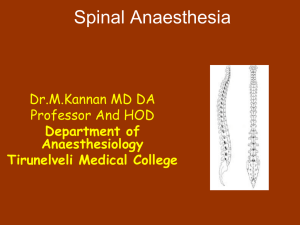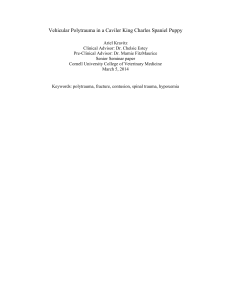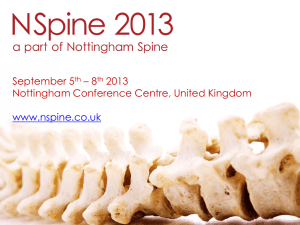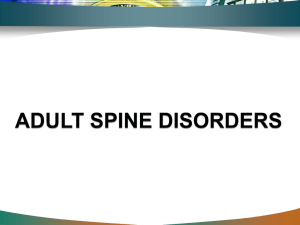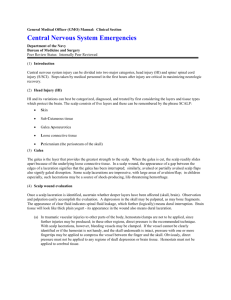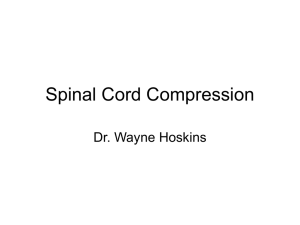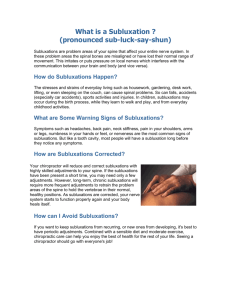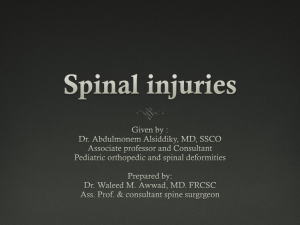Introduction to Subluxation Theories notes
advertisement
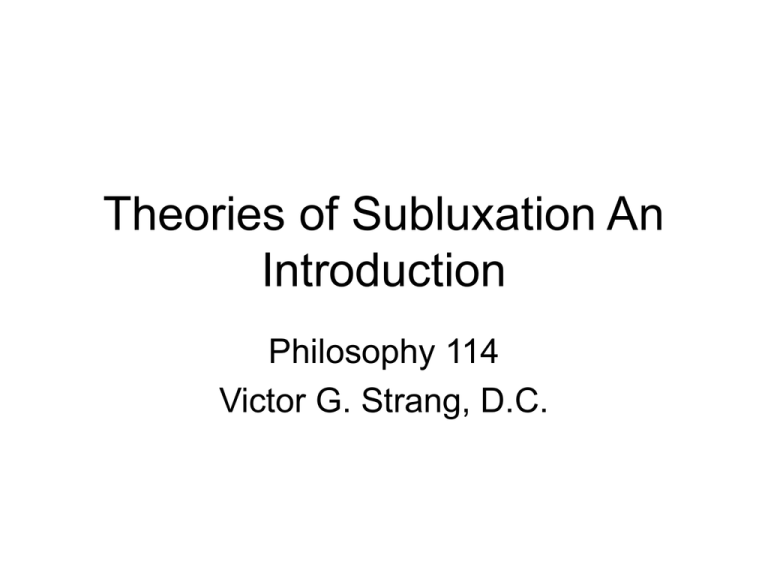
Theories of Subluxation An Introduction Philosophy 114 Victor G. Strang, D.C. “Theoreticians of spinal manipulation, at one time or another, have implicated virtually every anatomical component of the vertebral motor unit in their attempts to explain the mode of action of their therapy.” Drum, 1975 Some proposed mechanisms: theory 1. Restore vertebrae to normal position author Galen (1958) 2. Straighten the spine Pare (1958) 3. Restore blood flow Still (1899) 4. Relieve nerve compression Palmer (1910) Some proposed mechanisms: theory 5. Relieve irritation of sympathetic chain author Kunert (1965) 6. Mobilize fixated vertebral segments Gillet (1968) 7. Shift fragment of IVD Cyriax (1975) Some proposed mechanisms: theory 8. Mobilize posterior joints (z-joints) author Mennell (1960) 9. Remove interference with CSF circulation DeJarnette (1967) 10. Stretch contracted muscles Perl (1975) Some proposed mechanisms: theory author 11. Correct abnormal Homewood (1963) somatovisceral reflexes 12. Remove “irritable” spinal lesions Korr (1976) 13. stretch/tear adhesions Chrisman (1964) around nerve roots Some proposed mechanisms: theory author 14. Reduce distortions Farfan (1973) of the annulae (annulus fibrosus Neurobiologic Mechanisms of Manipulative Therapy, 1978 Areas of Research Involved in Mechanism of Action of Adjustments/Chiropractic Corrective Procedures Adjustment/Corrective procedure 2 Change in the musculoskeletal system 1 3 Change in the nervous system 4 Change in organ dysfunction or tissue pathology or symptom complex Major Subluxation Theories (Dr. Charles Henderson, PCC Researcher) • IVF Encroachment • Altered Sensory Input (dysafferentation) • Spinal Cord distortion “Little scientific information is currently available to resolve the questions of impact on human health that the FSL (functional spinal lesion) may have.” Triano, 1992 How do chiropractors evaluate individuals clinically to determine the appropriateness of chiropractic care? • • • • Biomechanical evaluation Neurologic evaluation Trophic assessment Psychosocial assessment From Mootz, Chapter 10, Gatterman’s 1995 text; Foundations of Chiropractic: Subluxation Biomechanical Evaluation • Contributing mechanical etiologies: (trauma, repetitive postural activities, etc..) • Static asymmetries: (high shoulder, altered curves, rotated foot, etc…) • Dynamic asymmetries: (gait, other movements) • Passive and active individual joint ranges of motion: (static and motion palpation) • Imaging procedures used to evaluate the above (x-ray, static and stress views, videoflouroscopy) Neurologic Evaluation • Symptoms (pain and its location and distribution from patient interview) • Palpatory tenderness • Altered muscle tone (palpation, EMG) • Vasomotor findings (thermography) • Sudomotor findings (palpation and galvanic skin response testing) Trophic Assessment • Altered tissue texture • Edema (signs of inflammation) • Metabolic disturbances • Nutritional imbalances These may be signs of aberrant local tissue metabolism or vascularity; metabolic disturbances and nutritional factors may be causative or complicating factors in somatic disturbances, e.g… “proinflammatory state” Psychosocial Assessment • • • • Mental attitude/outlook Social interactions Lifestyle habits Stress Biomechanical Models of Subluxation • Vertebral/spinal misalignment • Abnormal motion; fixation, hypermobility, compensation reaction • Joint dysfunction progressing to spinal degeneration Neurological Models • Neurologic compression/traction/torsion; affecting nerves, roots, cord • Neurologic irritation • Aberrant reflexes • Deafferentation/dysafferentation • Neurodystrophic effects Trophic Models • Axoplasmic flow mechanisms • Neurologic ischemia, macro and micro • Lymphatic/venous stasis • CSF flow dynamics Psychosocial Models • Psychogenic concepts: mental/emotional state influence on structure • Somatopsychic concepts: structural influence on mental/emotional states
